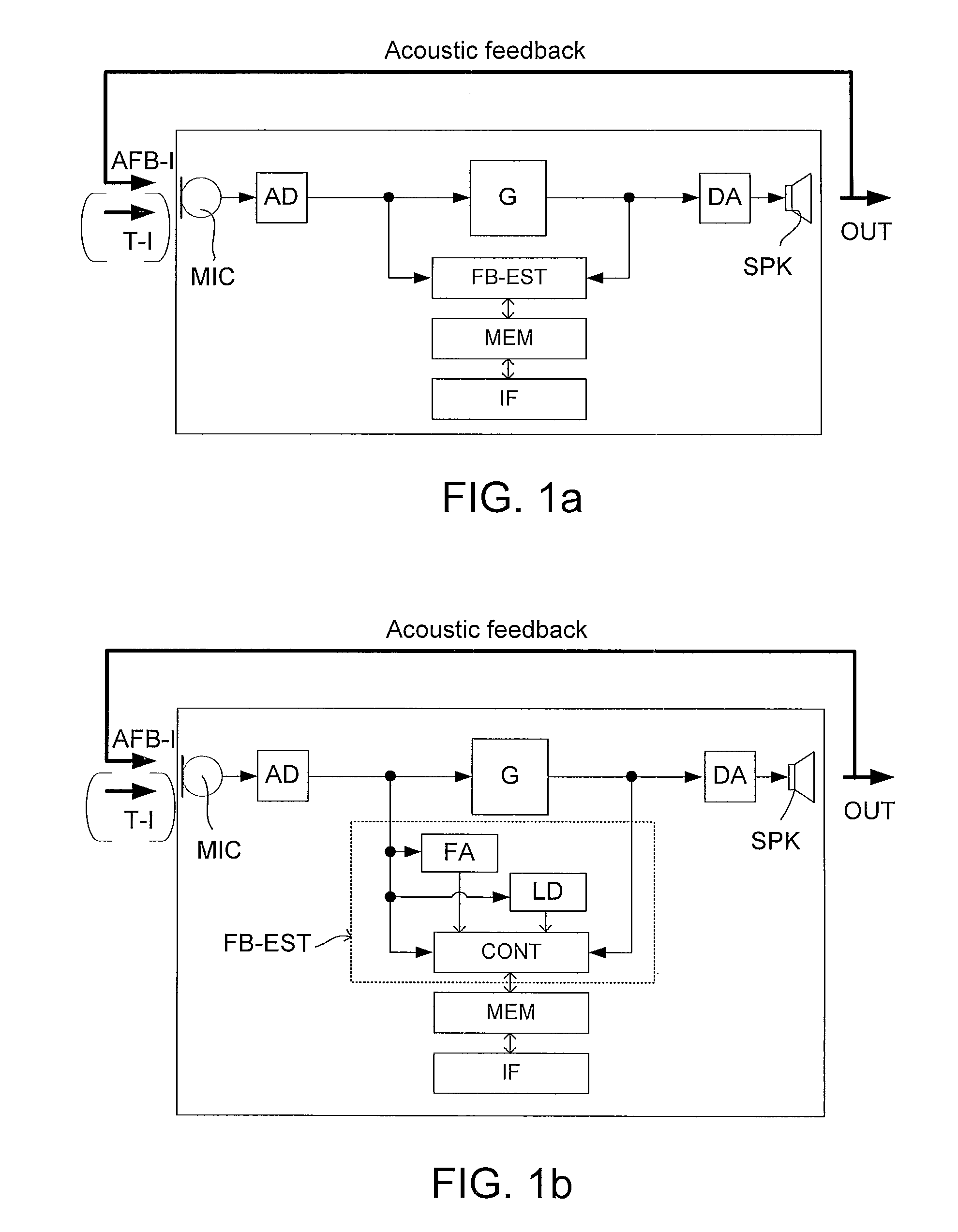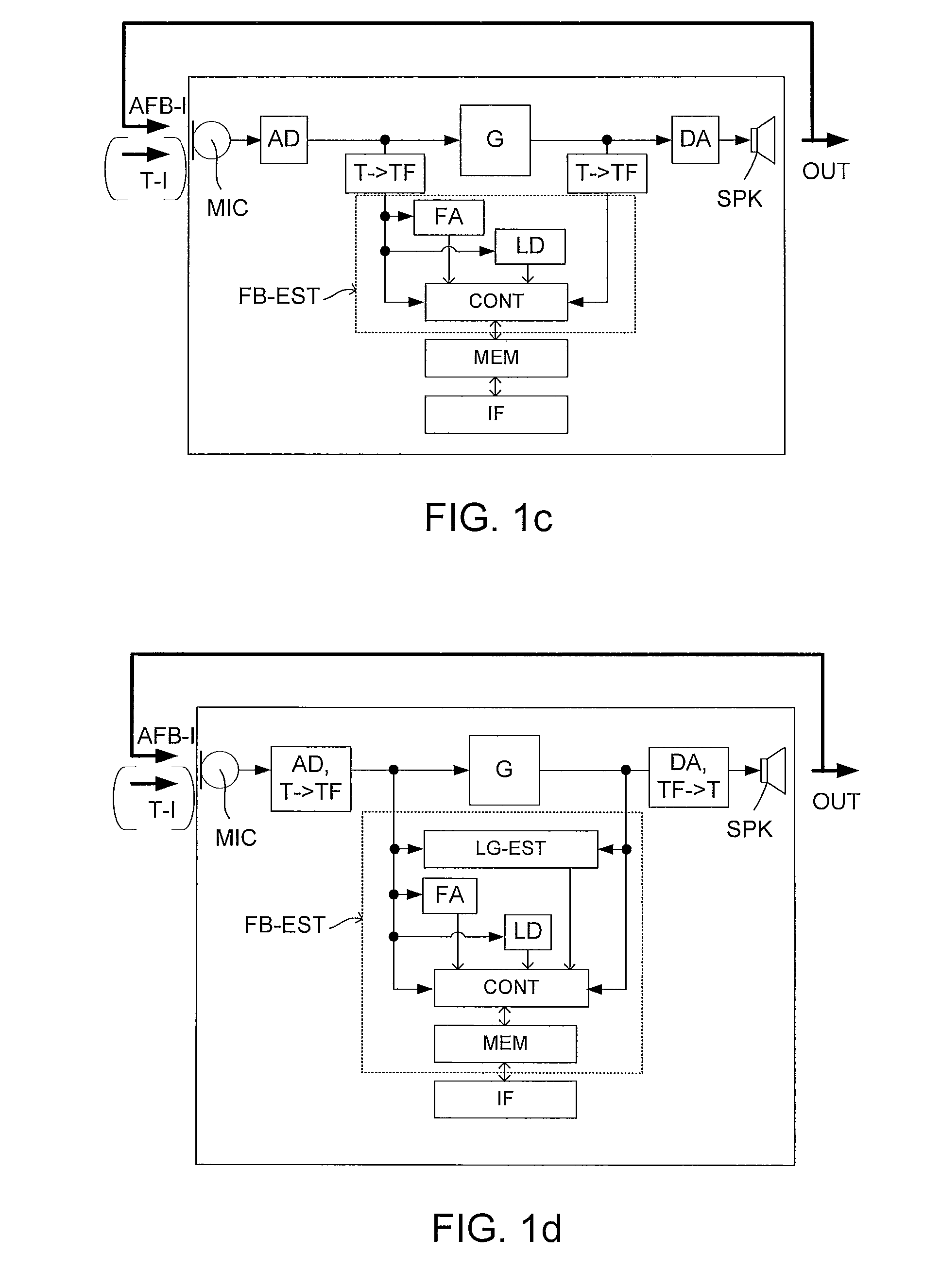Test system for evaluating feedback performance of a listening device
a listening device and feedback technology, applied in the field of acoustic feedback, can solve problems such as higher-than-realistic throughput delay
- Summary
- Abstract
- Description
- Claims
- Application Information
AI Technical Summary
Benefits of technology
Problems solved by technology
Method used
Image
Examples
example
[0131]An example of a feedback verification procedure is outlined in the following. In an embodiment, the listening device, e.g. in the form of a hearing instrument, comprises a “tone detector” configured to detect whether or not the signal contains feedback (optionally to detect a level of feedback) at a particular frequency. The results of feedback detection measurements performed at different frequencies (and possibly averaged over time) are logged in a memory of the listening device (or in a memory coupled to the listening device via an interface, cf. IF in FIG. 1). In an embodiment, the memory is implemented as data logger of the listening device. If the tone detector detects “feedback”, then the data logger increases one counter in an indexed array of counters. The array index is e.g. chosen based on the estimated feedback frequency. At fitting time, where a PC running fitting software for customizing software of the hearing instrument is connected with the hearing instrument ...
PUM
 Login to View More
Login to View More Abstract
Description
Claims
Application Information
 Login to View More
Login to View More - R&D
- Intellectual Property
- Life Sciences
- Materials
- Tech Scout
- Unparalleled Data Quality
- Higher Quality Content
- 60% Fewer Hallucinations
Browse by: Latest US Patents, China's latest patents, Technical Efficacy Thesaurus, Application Domain, Technology Topic, Popular Technical Reports.
© 2025 PatSnap. All rights reserved.Legal|Privacy policy|Modern Slavery Act Transparency Statement|Sitemap|About US| Contact US: help@patsnap.com



